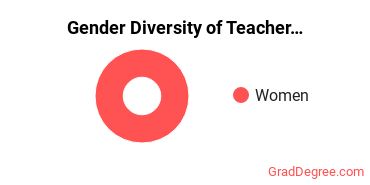Teacher Development & Methodology at College of Charleston
If you plan to study teacher development & methodology, take a look at what College of Charleston has to offer and decide if the program is a good match for you. Get started with the following essential facts.C of C is located in Charleston, South Carolina and has a total student population of 10,384.
Want to know more about the career opportunities in this field? Check out the Careers in Teacher Development & Methodology section at the bottom of this page.
C of C Teacher Development & Methodology Degrees Available
- Master’s Degree in Teacher Development & Methodology
C of C Teacher Development & Methodology Rankings
Teacher Development & Methodology Student Demographics at C of C
Take a look at the following statistics related to the make-up of the teacher development & methodology majors at College of Charleston.
C of C Teacher Development & Methodology Master’s Program

Of the students who received a teacher development & methodology master's degree from C of C, 56% were white. This is below average for this degree on the natiowide level. In the teacher development & methodology master's program at this school, racial-ethnic minorities make up 44% of degree recipients. That is 15% better than the national average.*
The following table and chart show the race/ethnicity for students who recently graduated from College of Charleston with a master's in teacher development & methodology.

| Race/Ethnicity | Number of Students |
|---|---|
| Asian | 1 |
| Black or African American | 1 |
| Hispanic or Latino | 2 |
| White | 5 |
| International Students | 0 |
| Other Races/Ethnicities | 0 |
Related Majors
- Junior High/Intermediate/Middle School Education & Teaching
- Early Childhood Education
- Elementary Education
References
*The racial-ethnic minorities count is calculated by taking the total number of students and subtracting white students, international students, and students whose race/ethnicity was unknown. This number is then divided by the total number of students at the school to obtain the racial-ethnic minorities percentage.
- College Factual
- National Center for Education Statistics
- O*NET Online
- Image Credit: By Lkeadle under License
More about our data sources and methodologies.
